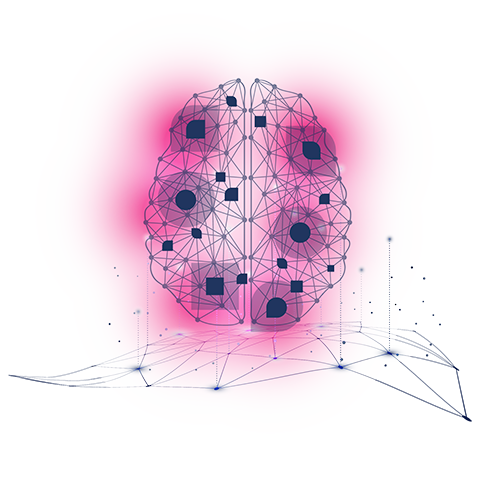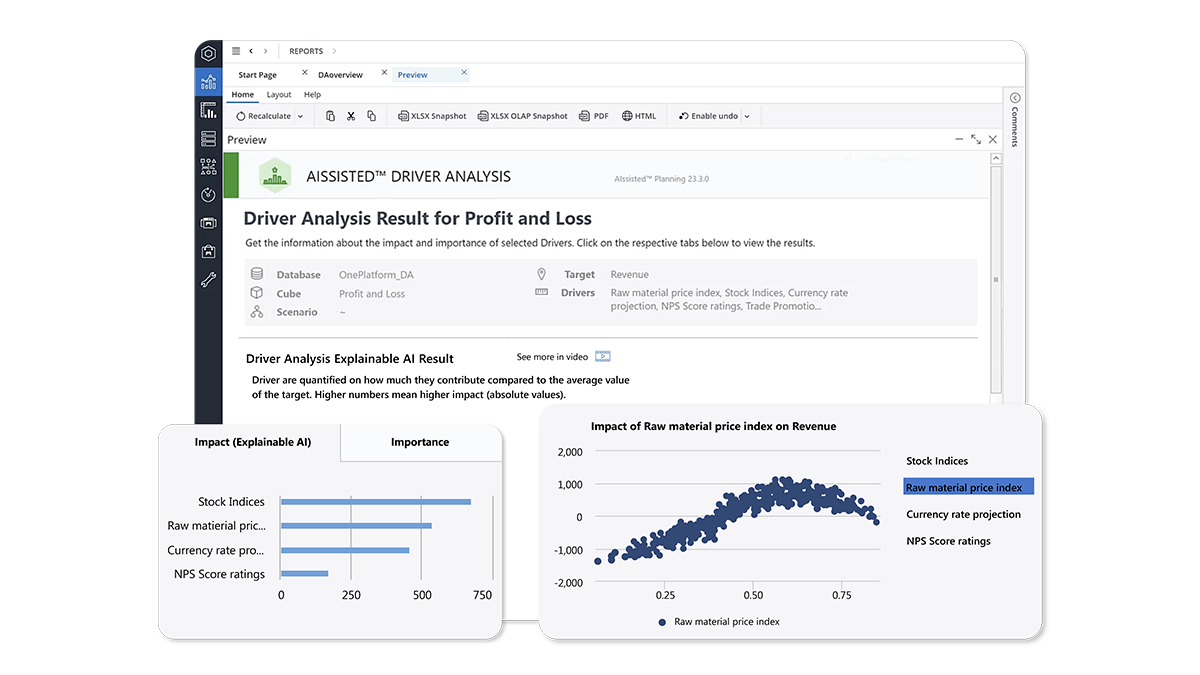
Beyond automation: exploring the potential of hyperautomation
Hyperautomation is at the forefront of digital transformation, reducing workloads and eliminating uncertainty in planning and analysis. It’s a combination of technologies that can be used to automate processes under a unified system.
Hyperautomation isn’t just about automation; it’s about hyper-speed, hyper-efficiency, and hyper-scalability.
What is hyperautomation?
Hyperautomation doesn’t just mean automating everything; its true potential lies in the automated integration of data and the potential for further automation of organizational processes that it brings.
When integrated with business intelligence (BI) and corporate performance management (CPM) tools, hyperautomation drives efficiency and accuracy in financial operations and forecasting. And this unified system lays the foundations for autonomous finance, where not just basic tasks, but even sophisticated processes can be executed automatically.
The system can respond to events, plans can be flexible, and humans can effortlessly explore and curate the data they need to make decisions with confidence.
That’s autonomous finance.
How does hyperautomation work?
Hyperautomation takes automation to the next level by combining several technologies. Artificial Intelligence (AI) and Machine Learning (ML) software can autonomously learn and optimize without the need for interaction. ML can identify key drivers of performance and the relationship between them, while AI can make decisions, initiate processes, and adjust plans accordingly.
Natural Language Processing (NLP): Communicating between humans and systems is crucial. NLP interprets and generates human language, opening doors to unprecedented levels of enterprise-wide communication.
Robotic Process Automation (RPA) uses computer software to duplicate processes that are rule-based. RPA is limited to executing individual assignments that are perfectly defined, and it is often used to bridge the gap between different data sources and formats.
That’s not an exhaustive list, but the convergence of these technologies goes well beyond streamlining and automating processes, it can redefine them. It challenges organizations to rethink what’s possible and to unlock future value.
5 benefits of hyperautomation
- Efficiency
Hyperautomation can bring improvements in operational efficiency by significantly reducing the time and effort spent on tasks that can be handled by technology. - Agility
This efficiency gain translates into faster financial reporting cycles and the provision of real-time insights, enabling decision-makers to act with greater speed and conviction. - Accuracy
Automation enhances the accuracy and consistency of organizational data. By eliminating human errors that can occur in manual data entry and calculations, organizations can rely on higher-quality data for making critical decisions. - Risk mitigation
This increased accuracy is crucial for risk management, especially where precise forecasting and analysis can be the difference between success and failure. - Collaboration
Hyperautomation can connect data, procedures, operations, and people. Users from all departments can collaborate more easily due to them all interacting with the same joined-up system. They can share common language and goals.
This is just the tip of the iceberg in terms of how automation is revolutionizing planning and analysis.
Hyperautomation in action
By automating repetitive tasks, streamlining workflows, and harnessing intelligent algorithms, hyperautomation enables organizations to achieve more, focus on strategic initiatives, and deliver exceptional value. Let’s explore some examples of hyperautomation in action.
Management reporting
Hyperautomation transforms financial processes like management reporting by automating tasks such as invoice processing and expense management. End-to-end workflows automate approval processes and flag discrepancies. By minimizing manual intervention, hyperautomation improves accuracy, accelerates processes, and enhances decision-making, ultimately driving financial efficiency and compliance.
Automated data integration: Link automated management reporting including extraction, transformation, and loading data. Previously this was a tedious process in Microsoft Excel.
Seasonal planning
Hyperautomation optimizes supply chain workflows from order processing to demand forecasting. Accurate demand forecasting prevents stockouts or overstocking, minimizing inventory costs and improving efficiency. By automating processes, organizations gain real-time visibility, reduce errors, and enhance responsiveness, ultimately ensuring seamless supply chain operations and customer satisfaction.
Seasonal planning informed by real-time data: Jedox enables access to up-to-date budgets, order quantities, and order inventory for each product group based on data from the LOGI-Soft ERP system. It revolutionized its Excel-based quantity planning process and informed better seasonal planning.
Sales and marketing
Hyperautomation empowers sales and marketing teams by automating processes such as CRM management and lead tracking. CRM platforms streamline customer interactions, improving productivity and customer engagement. By automating repetitive tasks, organizations drive revenue growth, enhance customer relationships, and achieve competitive advantage in the market.
Customer retention
How about using hyperautomation to help a business keep its customers? Integrating data can help businesses to form a holistic view of their customers, while AI can spot trends or anomalies. Leveraging AI to turn data into meaningful insights that can be used to improve customer loyalty, the customer experience, and ultimately customer retention.
AI-powered customer retention: For our AI project we are managing masses of data from several sources. Jedox is a great solution to assemble the right data as well as set, track, and monitor it over time.
Challenges of hyperautomation
The potential to redefine the data landscape of global organizations is immense, but the path has its challenges. One of the primary challenges lies in the initial implementation phase, which often requires investment in technology and training. Organizations must navigate the complexity of selecting the right automation tools to seamlessly integrate with existing systems and processes.
There’s also the hurdle of resistance to change within teams accustomed to traditional ways of working, necessitating a cultural shift towards acceptance of hyperautomation. There is a fear that technologies like AI will mean a reduction in the required workforce, but people should see hyperautomation as an opportunity to grow with technology. The deployment of AI or other cutting-edge technologies are unlikely to lead directly to job losses, but not adapting to this change could mean individuals get left behind.
It’s time to transform
Find out how your organization can harness the power of autonomous finance in our on-demand webinar. Timothy Caudill, VP Solution & Value Advisory, and Mike Pederson, Sales Director, share their vision for autonomous finance and how Jedox can help you on your journey.
Webinar: Harnessing Autonomous Finance
Conclusion
As organizations embark on their hyperautomation journey, they must navigate challenges and embrace opportunities. By leveraging hyperautomation, organizations can redefine their data landscape, drive innovation, and unlock future value. Through strategic planning, seamless execution, and a culture of innovation, hyperautomation promises to change the way businesses operate, delivering unparalleled efficiency, agility, and competitive advantage.




